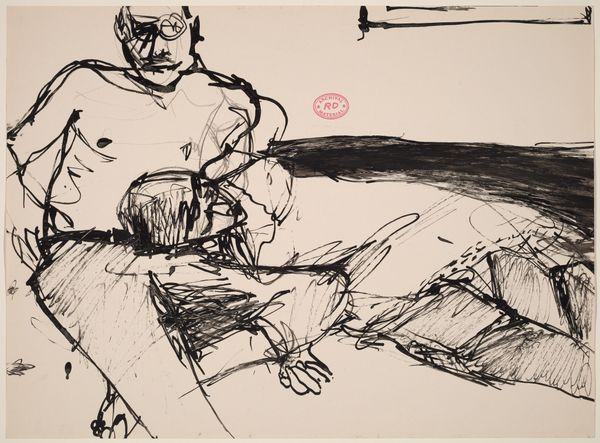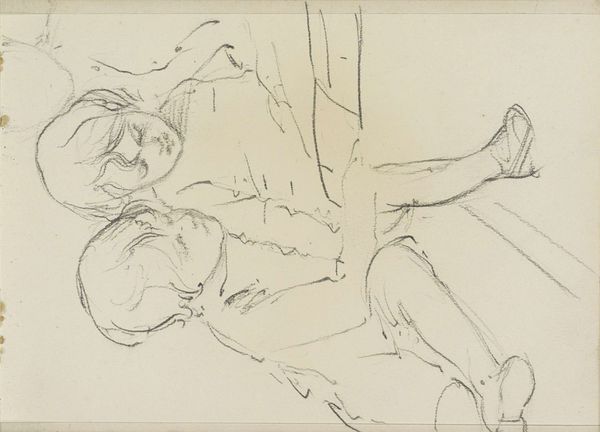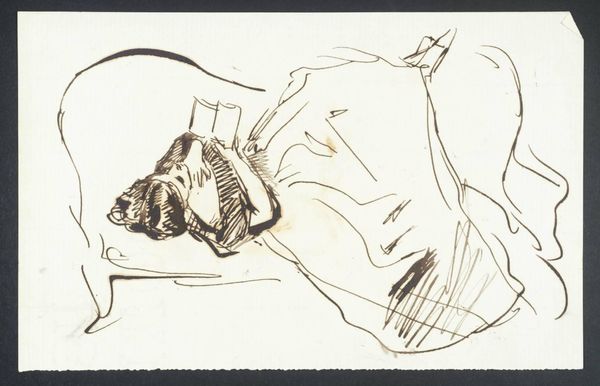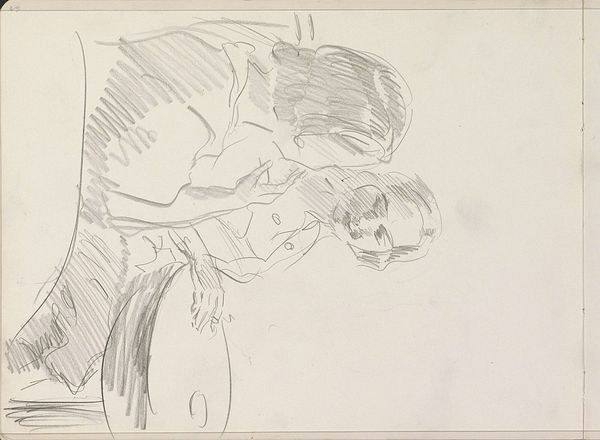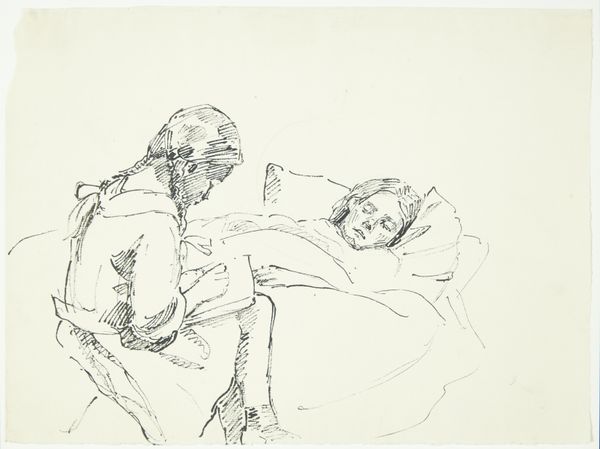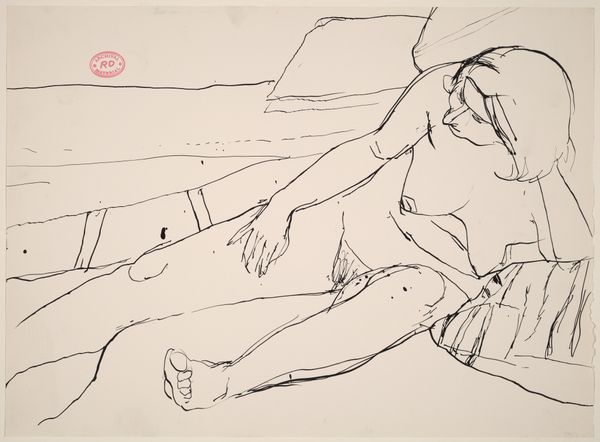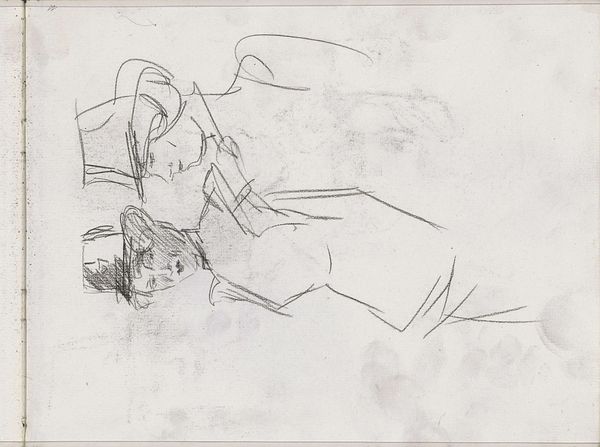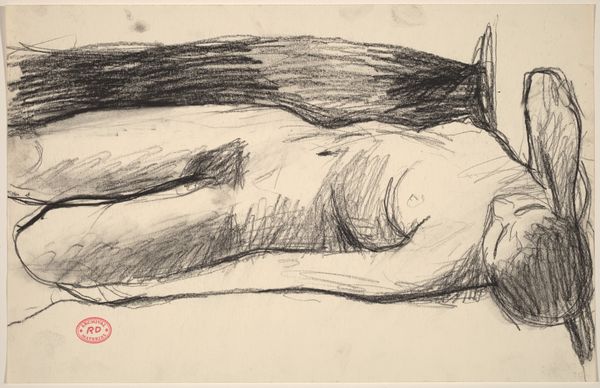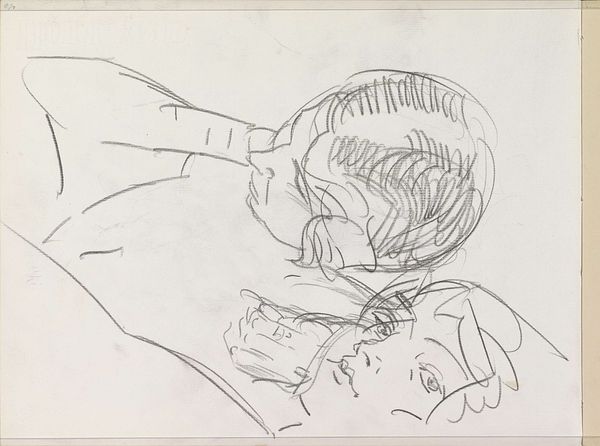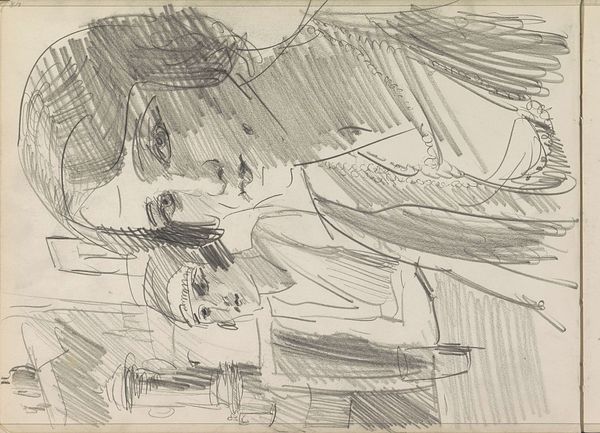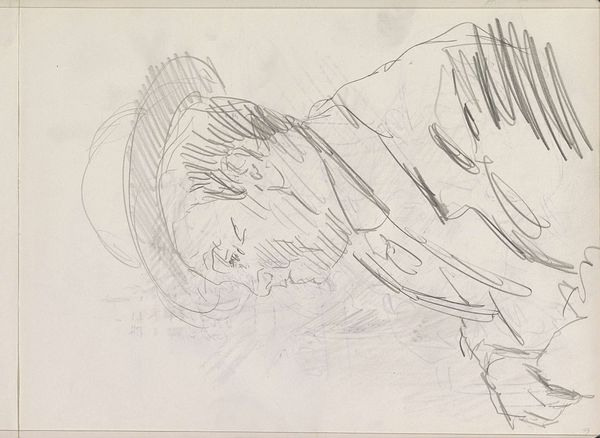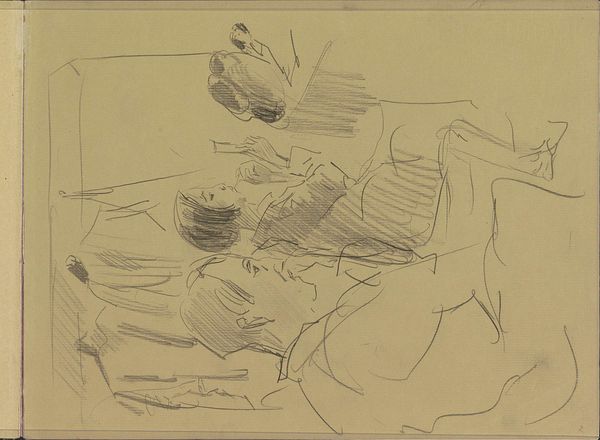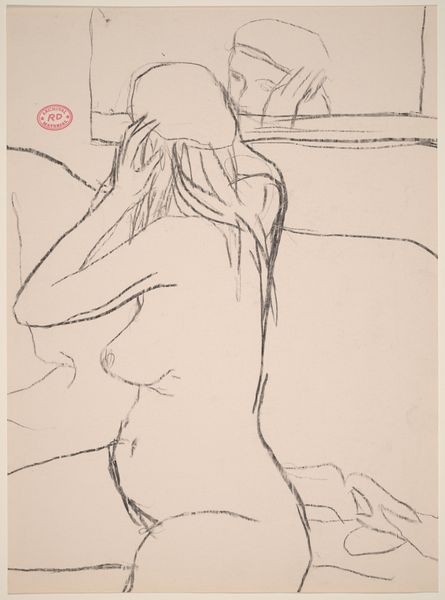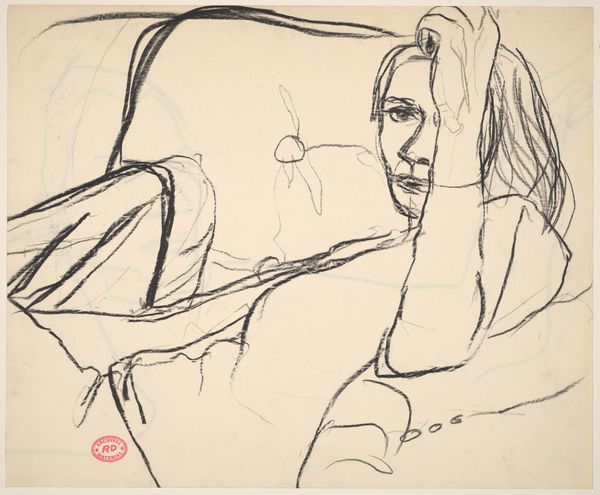![Untitled [woman holding a dog] by Richard Diebenkorn](/_next/image?url=https%3A%2F%2Fd2w8kbdekdi1gv.cloudfront.net%2FeyJidWNrZXQiOiAiYXJ0ZXJhLWltYWdlcy1idWNrZXQiLCAia2V5IjogImFydHdvcmtzL2FlNWViNTkyLTc2ZmYtNGVmNS04ZjY3LWNkZmRkZmU4MDJmMi9hZTVlYjU5Mi03NmZmLTRlZjUtOGY2Ny1jZGZkZGZlODAyZjJfZnVsbC5qcGciLCAiZWRpdHMiOiB7InJlc2l6ZSI6IHsid2lkdGgiOiAxOTIwLCAiaGVpZ2h0IjogMTkyMCwgImZpdCI6ICJpbnNpZGUifX19&w=3840&q=75)
drawing, ink
#
drawing
#
ink drawing
#
bay-area-figurative-movement
#
ink
Dimensions: overall: 23.2 x 30.5 cm (9 1/8 x 12 in.)
Copyright: National Gallery of Art: CC0 1.0
Curator: Here we have an untitled ink drawing by Richard Diebenkorn, believed to have been created sometime between 1955 and 1967. The image depicts a woman holding a dog. Editor: My first impression is the fragility of the piece. It feels both tentative and intimate, captured with minimal, almost frantic lines. You can sense the artist trying to seize a fleeting moment. Curator: I agree. Diebenkorn's place within the Bay Area Figurative Movement definitely shines through. While he’s known for his later abstract works, his return to figuration showcases the deeply humanistic aspect of post-war American art. These weren’t just images, but statements of existence within a rapidly changing society. Editor: The visible process is crucial. Look at how the ink bleeds slightly into the paper; those splatters aren't errors, they're part of the drawing's DNA. It’s almost performative—Diebenkorn wrestling with the ink to realize his vision. It challenges that false binary between “high art” and humble process. What inks did he use? What was the paper stock? Curator: Indeed, this isn't about perfect representation, it is about conveying feeling, and his handling of materials and gesture is fascinating. We also must consider Diebenkorn's relationship to the institutional art world, particularly its evolving standards for modern art in mid-century California. Editor: Perhaps this sketch offers a respite from those pressures—a personal, unmediated connection with subject and materials. The dog especially—notice how the lines seem softer, even protective. It evokes a tenderness you rarely see centered in art criticism, despite its universal appeal. Curator: It certainly offers an unguarded look into Diebenkorn’s artistic process. Editor: For me, it reveals how something seemingly simple can hold a wealth of emotional complexity. It prompts questions about how labor and process affect that end visual.
Comments
No comments
Be the first to comment and join the conversation on the ultimate creative platform.
